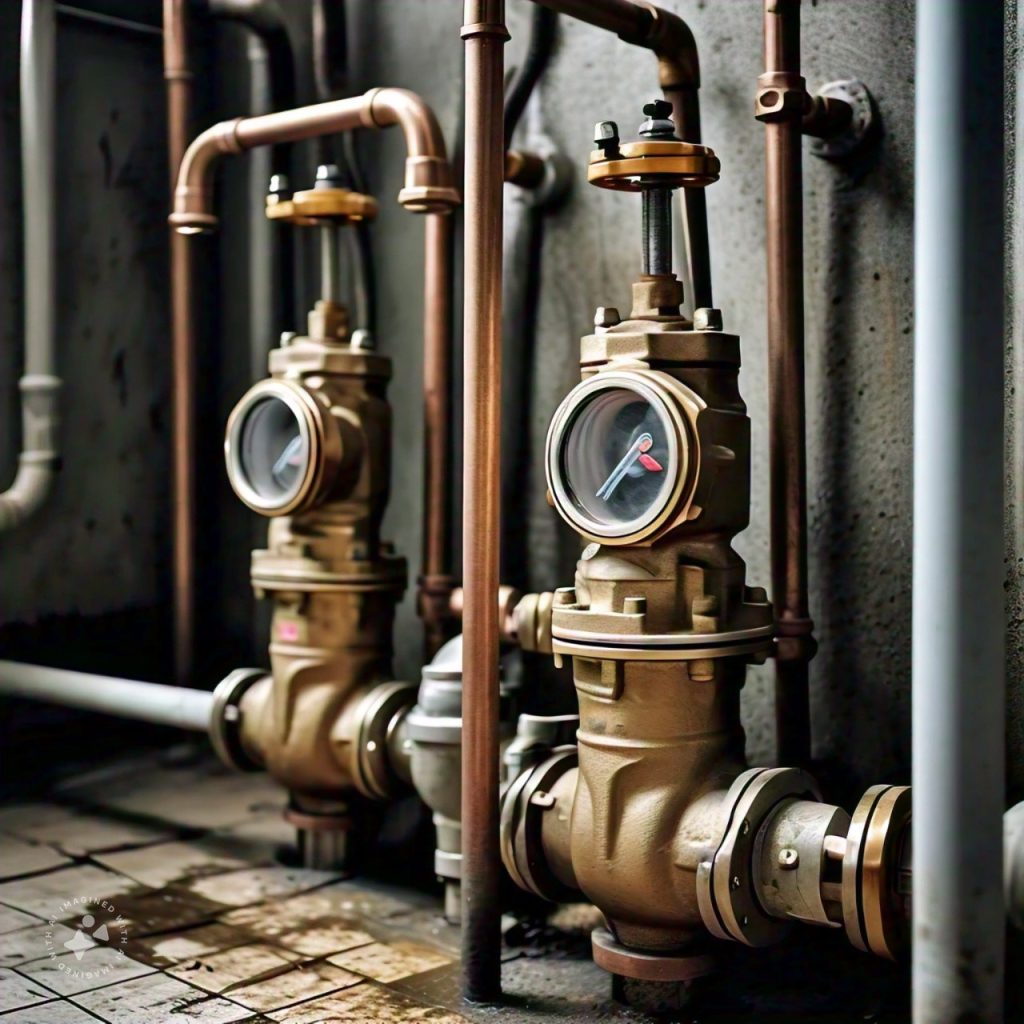A heat trap is a crucial component in plumbing systems designed to improve energy efficiency and prevent heat loss in water heating systems. These devices are particularly important in residential and commercial applications where hot water systems are used frequently. This article provides a comprehensive exploration of heat traps, including their definition, working principle, types, benefits, installation methods, and considerations for optimal performance.
Table of Contents
ToggleUnderstanding Heat Traps
A heat trap is a plumbing device or technique used to prevent unwanted heat transfer in a water heating system. It is designed to reduce the loss of heat from hot water storage tanks by creating a physical barrier that prevents the natural convection of hot water into the cold water supply lines. By doing so, heat traps help maintain the desired water temperature, reduce energy consumption, and increase the overall efficiency of the water heating system.
Working Principle
The principle behind heat traps is based on the natural behavior of hot water. Hot water tends to rise and move upward due to its lower density compared to cold water. This phenomenon, known as thermal siphoning, can cause heat to escape from the hot water tank into the cold water inlet and outlet pipes, leading to energy loss.
Heat traps are designed to counteract this process by creating a loop or dip in the piping that physically obstructs the upward movement of hot water. This barrier effectively traps the heat within the tank, preventing it from escaping and ensuring that the hot water remains at the desired temperature for longer periods.
Types of Heat Traps
There are two main types of heat traps used in plumbing systems: passive heat traps and active heat traps. Each type has its own unique design and method of operation.
1. Passive Heat Traps
Passive heat traps rely on the physical arrangement of the plumbing to create a barrier that prevents heat loss. There are several common designs for passive heat traps:
- Inverted U-Shape Loop: This design involves creating an inverted U-shaped loop in the piping near the top of the hot water tank. The loop prevents the hot water from rising into the cold water lines by creating a downward path that disrupts the natural convection process.
- Horizontal Loop: In this design, a horizontal loop is installed in the piping, creating a section where the water flow is directed horizontally rather than vertically. This configuration hinders the upward movement of hot water and traps the heat within the tank.
- Thermal Syphon Break: This design incorporates a vertical pipe segment that extends above the tank’s outlet. The height of this segment prevents the hot water from rising into the cold water lines, effectively breaking the thermal siphoning process.
2. Active Heat Traps
Active heat traps use mechanical devices, such as valves or check valves, to prevent heat loss. These devices are typically installed in the plumbing system and operate automatically to block the upward flow of hot water. Common types of active heat traps include:
- Flapper Valve: A flapper valve is a one-way valve that allows water to flow in one direction while preventing reverse flow. When installed in the hot water outlet, it prevents hot water from rising into the cold water lines, acting as an effective heat trap.
- Ball Valve: A ball valve is another type of one-way valve that uses a spherical ball with a hole in the center. When the valve is open, water can flow freely; when closed, the ball blocks the flow, preventing heat loss.
Benefits of Heat Traps
Heat traps offer several significant benefits for water heating systems, contributing to energy efficiency, cost savings, and improved system performance.
1. Energy Efficiency
One of the primary benefits of heat traps is their ability to improve energy efficiency. By preventing heat loss from the hot water tank, heat traps ensure that the water remains at the desired temperature for longer periods. This reduces the need for the water heater to constantly reheat the water, leading to lower energy consumption and reduced utility bills.
2. Cost Savings
The improved energy efficiency achieved through the use of heat traps translates into cost savings for homeowners and businesses. Lower energy consumption results in reduced heating costs, making heat traps a cost-effective solution for enhancing the performance of water heating systems.
3. Extended Lifespan of Water Heater
By reducing the frequency of heating cycles, heat traps help to extend the lifespan of water heaters. The decreased workload on the heating elements and other components reduces wear and tear, leading to longer-lasting and more reliable water heating systems.
4. Enhanced Hot Water Supply
Heat traps contribute to a more consistent and reliable hot water supply. By maintaining the desired water temperature, they ensure that hot water is readily available when needed, improving the overall comfort and convenience for users.
Installation of Heat Traps
Proper installation of heat traps is essential to ensure their effectiveness and maximize the benefits they offer. The installation process varies depending on the type of heat trap and the specific plumbing configuration.
Passive Heat Trap Installation
For passive heat traps, the installation involves modifying the piping arrangement to create the desired loop or dip. Here are some general steps for installing a passive heat trap:
- Identify the Hot Water Outlet: Locate the hot water outlet on the storage tank where the heat trap will be installed.
- Create the Loop: Depending on the chosen design (inverted U-shape, horizontal loop, or thermal syphon break), modify the piping to create the necessary loop or dip near the top of the tank.
- Secure the Piping: Ensure that the modified piping is securely attached and properly supported to prevent any movement or sagging.
- Test for Leaks: After installation, test the system for leaks and ensure that the heat trap is effectively preventing the upward movement of hot water.
Active Heat Trap Installation
For active heat traps, the installation involves adding a mechanical valve to the plumbing system. Here are some general steps for installing an active heat trap:
- Choose the Appropriate Valve: Select a suitable one-way valve (flapper valve or ball valve) for the installation.
- Identify the Installation Location: Locate the hot water outlet or the desired position in the piping where the valve will be installed.
- Install the Valve: Follow the manufacturer’s instructions to install the valve in the correct orientation. Ensure that the valve is securely attached and properly sealed.
- Test the System: After installation, test the system to ensure that the valve is functioning correctly and effectively preventing heat loss.
Considerations for Optimal Performance
To achieve optimal performance and maximize the benefits of heat traps, consider the following factors during installation and maintenance:
1. Proper Sizing and Placement
Ensure that the heat trap is appropriately sized and placed in the correct location within the plumbing system. Incorrect sizing or placement can compromise the effectiveness of the heat trap and reduce its ability to prevent heat loss.
2. Regular Maintenance
Perform regular maintenance and inspections to ensure that the heat trap remains in good working condition. Check for any signs of wear, damage, or leaks and address any issues promptly to maintain optimal performance.
3. Compatibility with Water Heater
Ensure that the heat trap is compatible with the specific type and model of water heater being used. Consult the water heater manufacturer’s guidelines and recommendations for the installation of heat traps.
4. Professional Installation
For complex installations or if you are unsure about the installation process, consider hiring a professional plumber. Professional installation ensures that the heat trap is correctly installed and functions as intended, providing maximum benefits.
Conclusion
Heat traps are essential components in plumbing systems designed to improve energy efficiency and prevent heat loss in water heating systems. By understanding the different types of heat traps, their working principles, benefits, and installation methods, homeowners and businesses can make informed decisions to enhance the performance of their water heating systems.
Whether you choose passive heat traps with modified piping arrangements or active heat traps with mechanical valves, these devices offer significant advantages, including improved energy efficiency, cost savings, extended lifespan of water heaters, and enhanced hot water supply. Proper installation and regular maintenance are key to ensuring the optimal performance of heat traps, making them a valuable addition to any water heating system.

